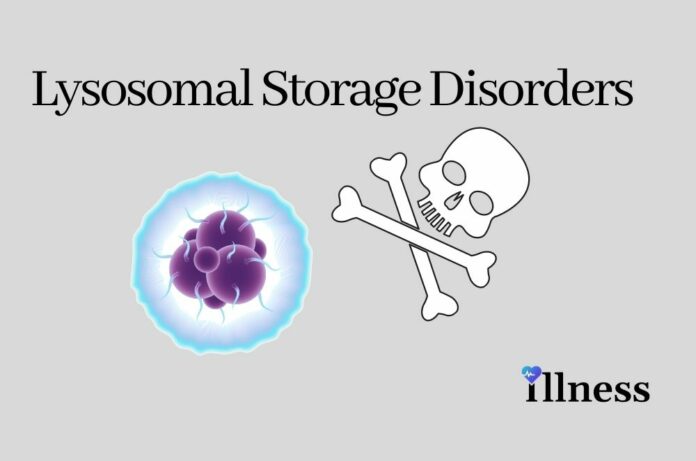Overview
Lysosomal storage diseases are inherited metabolic diseases that are characterized by an abnormal build-up of various toxic materials in the body’s cells as a result of enzyme deficiencies. There are nearly 50 of these disorders altogether, and they may affect different parts of the body, including the skeleton, brain, skin, heart, and central nervous system. New lysosomal storage disorders continue to be identified. While clinical trials are in progress on possible treatments for some of these diseases, there is currently no approved treatment for many lysosomal storage diseases.
Cause
In each case, lysosomal storage diseases are caused by an inborn error of metabolism that results in the absence or deficiency of an enzyme, leading to the inappropriate storage of material in various cells of the body. Most lysosomal storage disorders are inherited in an autosomal recessive manner.
Symptoms
There is no cure for lysosomal storage disorders, and there are not yet specific treatments for many of these diseases. However, progress is being made in the search for therapies, and there are treatments available for some lysosomal storage disorders that greatly improve the quality of life for those affected.
Bone marrow transplantation (BMT) is effective in preventing progressive mental retardation in children with MPS IH (Hurler disease) if it is done before two years of age. It is less effective in correcting or preventing the bone and joint complications of the disease. BMT is considered standard treatment for infants with MPS IH if a suitable matched bone marrow donor can be found and the procedure is done before the child reaches the age of two years. The principle of BMT is to replace the bone marrow, and therefore the whole-blood system, of an individual affected by a particular disease with marrow from another person who is healthy. BMT is under investigation for the treatment of other lysosomal storage diseases. So far, none has shown as much benefit as patients with MPS IH (Hurler disease).
Enzyme replacement therapy (ERT) has proven effective for individuals with Gaucher disease type I. Anemia and low platelet counts have improved, enlargement of the liver and spleen have been greatly reduced, and skeletal findings have improved. These systemic manifestations also improve in individuals with Gaucher disease types II and III who receive ERT. However, ERT has not been effective in reducing or reversing neurological symptoms associated with Gaucher disease types II and III.
The orphan drug alglucerase injection (Ceredase), which is a placenta-derived enzyme, was approved by the U.S. Food and Drug Administration (FDA) in April 1991 for the treatment of Gaucher disease type I. It was the first ERT proven effective for the treatment of Gaucher disease type I, and it continues to be studied for the treatment of types II and III.
The synthetic form of this drug, imiglucerase (Cerezyme), was approved by the FDA in 1994. Recombinant DNA technology, or genetic engineering, is used to produce Cerezyme. This was an important step in overcoming limitations of the availability of Ceredase, which is derived from human tissue sources. Ceredase and Cerezyme are manufactured by the Genzyme Corporation of Cambridge, MA. They replace, glucocerebrosidase, the enzyme that individuals with Gaucher lack.
In 2003, the FDA approved the use of miglustat (Zavesca) tablets as the first oral treatment option for individuals with Gaucher disease type I. Zavesca is the first of a new class of drugs known as substrate reduction therapy. Zavesca is used for individuals with mild to moderate Gaucher disease type I who do not respond to enzyme replacement therapy.
Treatment
At present, there are no known cures for LSDs. However, researchers continue to make progress toward treatment options that go beyond treating symptoms to address underlying causes.
Today, bone marrow transplantation, enzyme replacement therapy (ERT), and substrate reduction therapy (SRT) are available treatment options for patients with certain types of LSDs. The scientific community continues to conduct research in the hopes of finding cures for patients with all types of LSDs.
Other
All LSDs are progressive, meaning that they get worse over time. The rate of progression, the severity of symptoms, and the organs affected vary among disorders and even within each disorder type.
LSDs can affect different body organs or systems that include:
• Bones and joints
• Central nervous system
• Eyes
• Heart
• Kidneys
• Lungs
• Spleen
• Liver
• Skin
Source
https://rarediseases.org/rare-diseases/lysosomal-storage-disorders/



